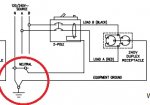Can someone verify if this setup seems correct. From everything I've read this is what I come up with. I currently have a 240V line coming from the main panel to an old switch near the pump. There are three lines coming from the main, 2 black load wires and a green ground wire. The old switch connects to the old pump.
I want to replace the pump and replace the old switch with a GFI spa panel as a new disconnect. The new pump I have is pretty straight forward as it can run 240V with Load 1 and Load 2 wires and a ground wire. I'm questioning the connection from the main panel to the spa panel disconnect because there is not neutral line. Everything I've read says you don't need it and you don't need to hookup the pig tail on the GFI breaker on the spa panel, and the GFI will still work fine. I've uploaded a diagram as a visual, I hope it makes sense.
Thanks in advance for the help!!

I want to replace the pump and replace the old switch with a GFI spa panel as a new disconnect. The new pump I have is pretty straight forward as it can run 240V with Load 1 and Load 2 wires and a ground wire. I'm questioning the connection from the main panel to the spa panel disconnect because there is not neutral line. Everything I've read says you don't need it and you don't need to hookup the pig tail on the GFI breaker on the spa panel, and the GFI will still work fine. I've uploaded a diagram as a visual, I hope it makes sense.
Thanks in advance for the help!!




